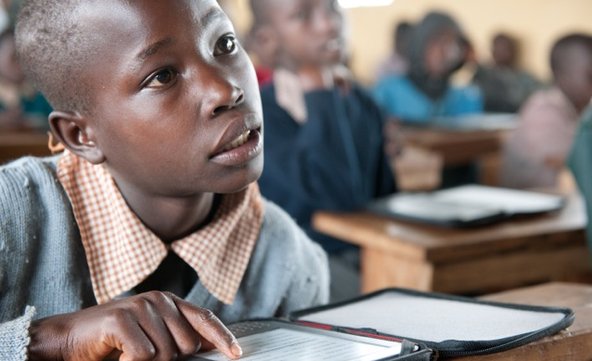The manuscript was stumbled upon in a storage unit in Texas and returned to the Buck family in December in exchange for a small fee, said Jane Friedman, the chief executive of Open Road Integrated Media, the publisher.
Buck, the first American woman to win the Nobel Prize in Literature, is believed to have completed the manuscript for the book, “The Eternal Wonder,” shortly before she died of cancer in 1973, said her son Edgar S. Walsh, who manages her literary estate.
The novel is one of dozens that the prolific Buck completed during her lifetime, a tumultuous eight decades that took her as a young child from her birthplace, Hillsboro, W.Va., to China, where her father worked as a Presbyterian missionary. While in her late 30s, she wrote “The Good Earth,” her second and most famous novel, a compassionate portrait of Chinese farmers that was published in 1931 and became the biggest-selling novel in the United States for two successive years.
After Buck returned to the United States, she continued to write both fiction and nonfiction until the end of her life, churning out material at a pace that prompted the writer John Hersey to remark that she had produced “probably 70 too many” books. (Open Road estimates that she wrote about 100 books, including fiction, nonfiction and commentary.)
Oprah Winfrey revived the Buck canon by choosing “The Good Earth” as one of her book club selections in 2004. Now the publisher of Buck’s digital backlist, Open Road is trying to move her work into wider circulation again. Last year it announced that 13 of Buck’s novels, including “The Good Earth,” “The Promise” and “A House Divided,” would be released as e-books for the first time in an effort to reach an audience beyond print readers.
The recently discovered book was described by the publisher as “the coming-of-age story of Randolph Colfax, an extraordinarily gifted young man whose search for meaning and purpose leads him to New York, England, Paris and on a mission patrolling the DMZ in Korea that will change his life forever — and, ultimately, to love.”
Ms. Friedman, a former chief executive of HarperCollins, founded Open Road in 2009. “All of the themes that were important to Pearl Buck are in this book,” she said. “The main character, the love, the attention to detail of the Chinese artifacts, the relationship this young man has. She writes in a way that is absolutely hypnotic.”
Mr. Walsh said that his mother spent her last four years in Vermont, and when she died, her estate was in disarray.
How two copies of the book, a typed version and a photocopied manuscript in Buck’s handwriting, made it to Texas, he said, remains a mystery to the family.
“After my mother died in Vermont, her personal possessions were not carefully controlled,” he said. “The family didn’t have access. Various things were stolen. Somebody in Vermont ran off with this thing, and it eventually ended up in Texas.”
Peter Conn, a professor of English and education at the University of Pennsylvania who wrote “Pearl S. Buck: A Cultural Biography,” said that of Buck’s contributions, she most notably commanded the imagination of American readers with her descriptions of China.
“Pearl Buck strongly shaped Western and specifically American perceptions of China to an extent that had not been seen in the past,” he said. “She actually can make claim to a unique kind of cultural achievement, which is to prepare Americans for the increasingly tangled relationship we were going to have with China for the next 70 or 80 years.”
Mr. Conn said that Buck’s work began to drop off in quality during the 1940s, and that the books that came afterward were not “consistently as interesting, with a few exceptions.”
The Nobel Prize in Literature, which is awarded for a body of work, cited Buck’s “rich and truly epic descriptions of peasant life in China” and her “biographical masterpieces.” She wrote two biographies of her parents, members of the Southern Presbyterian Mission who were ardently devoted to their work.
Although Mr. Conn has not yet read “The Eternal Wonder,” being released on Oct. 22 in paperback and e-book formats, he said he was intrigued to hear that it was set partly in Korea, where Buck did much of her work.
“There are probably passages of interest,” he said. “She’s an extraordinary woman who led an incomparably fascinating life.”
Article source: http://www.nytimes.com/2013/05/22/business/media/a-pearl-buck-novel-new-after-4-decades.html?partner=rss&emc=rss
